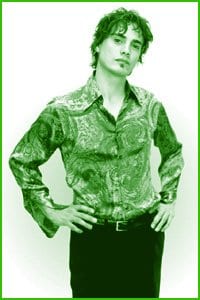Five years ago I disconnected my television cable. Three years ago, I deliberately snapped my television antenna.
I don’t miss having easy access to television programs.
I rent movies. There’s always the Xtra West Oscar’s party at the Fountainhead for that annual television event. And my friends Jeff and Dennis invite me to their place for the one show I really like: Queer as Folk.
Truth is, I took a deep breath before snapping that aerial. But I could no longer stand the trash being force-fed us by networks. And I was deeply disappointed by the so-called gay programming that had suddenly appeared on television, shows like Ellen and Will & Grace.
They didn’t seem to me any further ahead than the early “gay” movies like Making Love and Longtime Companion. Those films, from 1982 and 1990 respectively, attempted to make gays palatable to society by portraying us as harmless and sad people who would rather not be gay or are deserving of sympathy as we inevitably die of AIDS.
True, it was a step forward to get any gay-positive message in the movie theatres. But it speaks volumes that Making Love got a Restricted rating because of its subject matter and a gay kiss.
And, true again, it was another step forward when that subject matter-our lives-was taken from a restricted movie screen and moved indoors to prime time.
So, like millions of others, I watched Ellen with eager anticipation. And found that she lost her sense of humour after coming out. That’s stunning, considering the number of brilliant out lesbian comics and comedians-like Lea Delaria, Kate Clinton and Suzanne Westenhoeffer.
And I’m sure I was far from alone in the high hopes I pinned on Will & Grace. The first year was fun as it explored the relationship between a gay man and a straight woman, celebrating the “fag hag.” And Jack’s pungent sense of humour and flagrant sissy-ness reminded me of several of my friends; he’s an adorable character, for sure. But I pined to see Will get laid. And pined. And pined.
And gave up, as I realized that the show was actually portraying its title characters as living a sexless heterosexual marriage. I don’t know a single gay man living like that, though no doubt there are some.
In short, major gay characters in film and television are not allowed to get laid unless they’re leaving their wives, dying of AIDS, or acting as slutty foils that we’re supposed to laugh at.
Except in Queer as Folk.
In that series, and I’m talking about the US version filmed in Toronto, gay men in their 20s and 30s have sex. Lots of it. And the sex scenes are hot. The backroom bar and bathhouse shots have a strobing intensity. The first year’s sex scenes between Brian and Justin made television history, as did the second season’s lovemaking between Melanie and Lindsay.
Some have argued that QAF’s focus on sex, bars and open relationships doesn’t reflect the diversity of the gay community. No kidding. Neither did the focus of Making Love on monogamous gay coupling and wife-leaving reflect the diversity of the gay community.
Fact is, Queer as Folk explores a part of gay culture that had not previously been reflected back to us in the glare of a TV set. Clearly, the first season was making a point that gay sex is good. Character development suffered a bit that year, but the freshness of seeing gay sex, promiscuity, open relationships and intergenerational sex served up unapologetically won the series a large core of dedicated watchers. And its share of critics who would prefer that any gay play, newspaper, song, movie or television series pretend that we don’t have sex or that our entire culture parallels the traditions of heterosexual dating and marriage.
The second season saw a deepening of the plotline and of character development as the episodes explored gay-bashing, lesbian sexuality and commitment, and communication within relationships. The scriptwriting reached a zenith for any queer show in history. And it still stayed sex friendly.
I’ve developed a personal crush on the character Emmett, played by out gay actor Peter Paige (the only other out gay actor in a major role is Randy Harrison who plays Justin). Some of my friends say Emmett is a sterotypical slut/fashion victim. I say he’s a beautiful, tender man who loves his friends deeply and who, as is said to him in the second episode of the third season, has never met a cock he didn’t like. And he’s an old-fashioned sissy, a style of being gay that was far more popular in the 1980s, when I came out, than it is in today’s gym-bunny era of false gay masculinity. I love Emmett precisely because he’s always horny and a poof.
Season three is now upon us (beginning Mon Apr 7 at 10 pm on Showcase and running for 14 sparkling new episodes), and my review copy of the first two episodes hold much promise. Lesbians are going to love a bathtub scene between Lindsay and Melanie. The male sexuality is cut back a bit to make room for even deeper character and plot development, with themes exploring queer friendship, romance, sleeping with your best friend, electoral politics, baby-making, and false accusations of child molesting.
May the series continue to take queer representations on screen to places we’ve never gone before. Eat your heart out, Willful and Graceless.
QUEER AS FOLK.
Showcase.
Mondays, starting Apr 7.
10 pm.

 Why you can trust Xtra
Why you can trust Xtra


